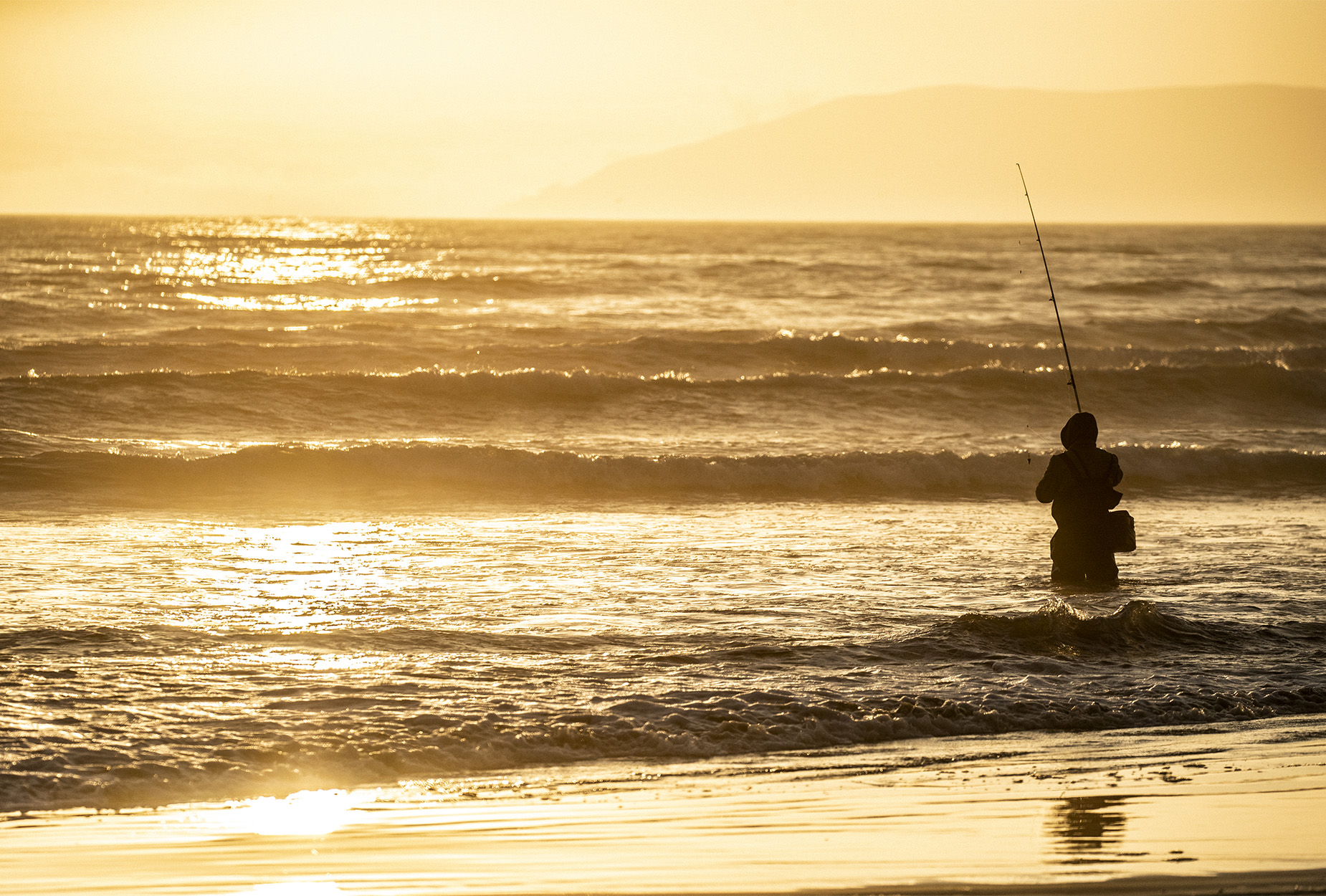I was very lucky to have grown up with access to the Atlantic Coast. Since I was a little kid, I spent my summers fishing and crabbing at the Jersey Shore. This access pushed me into spending too much money on boats and gear as I got older, but because of all my time spent fishing saltwater, I’m comfortable on oceans and bays. But for thousands of people who didn’t grow up in close proximity to the beach, fishing along the coast presents unique challenges.
I hear from folks all the time who are headed to the coast from inland, often for a vacation. They want to wet a line while they’re in town, but their freshwater fishing knowledge will only get them so far in saltwater. A lot of these anglers are at least aware of tides, and they want to know: What tides are best for fishing? The thing is, it’s slightly more complicated than that. To capitalize on the best fishing opportunities, you need a basic understanding of the way tides work and how fish commonly react to them. With this knowledge you’ll instantly increase your odds of success, even if you’re a complete beginner.
There is no more critical element to successful saltwater fishing than having a basic understanding of tides — things like picking the right bait or lure are secondary to tidal knowledge. So, to shorten the learning curve for the salt-curious, here’s a simple breakdown of how tides work and how you can use them to catch more fish, even with little or no prior saltwater experience.
Understand How Tides Work
What Creates Tides?
Tides are caused by the gravitational pull of the moon, and, to a lesser extent, the sun. Once you learn exactly how tides work, it’s hard not to be in awe of the phenomena, because 24-7, 365 days a year, that glowing orb nearly 240,000 miles away from planet Earth is manipulating entire oceans.
The best way to understand tide is by picturing a shallow bowl filled halfway with water. If you tilt the bowl to one side, even very slightly, the water is going to move to one side of the bowl, bulging up along that edge; tilt it the other way and the water bulges on the other side. This is essentially what the moon’s gravitational pull is doing to the water in our oceans — pushing it around as if it’s trapped in a giant bowl. When that pull causes water to move toward the shoreline, we’re on the deep side of the bowl, which would be high tide. When the water “sloshes” away in the other direction, our side of the dish is now shallow — we’re in low tide. Although the moon creates tidal ebb and flow in every ocean across the world, how it affects specific regions will vary.
How Moon Phase Impact Tide
Gravitational pull will always vary by moon phase. As an example, during a full moon, tides are more drastic. During high tide the water may reach feet above the normal high tide line and during low tide areas that are normally still underwater can be exposed.
Timing the Tides
What’s constant is that there will be two low and two high tides within a 24-hour period every day, so the tide changes approximately every 6 hours. What varies wildly, however, is tidal range.
Tidal Ranges
Tidal range refers to the difference in water height between tides. In most locations, the variance is less than 10 feet, meaning if the water in a given area is 2 feet deep at low tide, it might be 8 feet deep at high tide. But then there are extremes. The Bay of Fundy in the Canadian Maritimes has some of the most drastic tide range on the planet. The difference in depth between low and high tide can be the equivalent of a four-story building.

Photo by Joe Cermele
The more extreme the tidal range, the more forceful the tidal currents created by the ebb and flow. Understanding this current and how it affects fish is critical in linking tide times with productive fishing.
How to Fish Tides
Rookie and novice saltwater anglers tend to equate bays and oceans with bodies of still water. They think of them as giant lakes. With that mindset comes the notion that, at any time of day, you can cast a piece of bait or lure into a bay or ocean and there will be fish swimming around that will eat it.
But because of those ever-changing tides, saltwater fish move around constantly. Freshwater fish move, too, of course, but not because the water level is frequently changing.
Let’s say you know of a submerged stump field in a lake. There are probably some bass, crappies, or pike living in and around it most of the time during the warmer months. Meanwhile, if you have a sunken rock pile in a saltwater bay, it may be swarming with fish at high tide and a complete dead zone hours later at low tide. The reality is that inshore and land-based saltwater fishing is far more akin to fishing a river than a lake, and knowing how to decipher tidal currents is critical to your success.
If you’re fishing far offshore in the open ocean, tide becomes less important as its impact is heavily muted by water depth and a lack of structure. Inshore, though, tide is everything. Species like snook, redfish, striped bass, and seatrout use the current to their advantage when hunting. They’ll hold behind bridge pilings, points, or on the down-current side of submerged humps, reefs, and rock piles waiting for that tidal flow to carry forage right to them.

Photo by Joe Cermele
In many cases it doesn’t matter if the tide is moving in or out, it just matters that it’s moving. The strength of the tidal current will vary throughout a tide cycle, and it’s extremely common for the best bite to occur during a window when the current is at the perfect speed and the water is just at the right depth for feeding.
Getting your mind around the pros and cons of the three tidal phases will help you calculate when and where to cast on any given day.
Understanding Tide Phases
High Tide
Pros: High water creates options and opportunity for big fish. Forage species like baitfish, shrimp, and crabs that were enjoying the security of shallow water become easy targets now. Fish like stripers, redfish, flounder, and snook can move from deep water haunts onto flats, into shallow coves, and into troughs close to the beach. This ability to roam more freely creates more opportunity for anglers — those bound to the shore especially — to get lures and baits in front of big fish that may have been out of reach at low tide.
Read Next: How to Catch Inshore Redfish, Trout, and Flounder from a Kayak
Cons: With increased ability to roam around, game fish can be less concentrated and more difficult to find. High water also scatters baitfish and other forage. In bay settings, high tide allows forage to move into flooded grass and far up creeks that are inaccessible during low tide.
Slack Tide
Pros: Slack tide is the brief period that occurs between tidal flow changing direction. In most areas it doesn’t last very long, but during this short span, bays and oceans do, in fact, become lake-like. The lack of water movement turns the fish off until the current picks up again, but there are some scenarios where slack tide is the time to attack. This can be the case in narrow bodies of water such as inland canals and inlets that experience very fast tidal current throughout much of the day. If the flow is too fast, it can be very difficult to present lures and baits to species like striped bass and tautog that hold close to the bottom behind submerged structure. Sometimes the only opportunity to get your offering in front of them occurs at dead slack tide.
Cons: As we’ve learned, moving water prompts feeding. Gamefish know current overpowers smaller fish, making them easier to catch. It carries crabs and shrimp to hungry mouths and turns structures like docks, bridges, and jetties into ambush points. Take away the current and all of this stops.
Low Tide
Pros: Though fishing can be trickier at low tide overall, this tidal phase is a great concentrator. Schools of baitfish and other forage species congregate or become trapped in shallow areas. Closer to inlets, forage can stack up along sea walls and jetties to stop itself from being drawn out into the ocean by the outgoing tidal flow. Some species, like bonefish and redfish, will wait until low tide to attack forage that can’t flee as easily.
Cons: Fish feel exposed in shallow water, especially if that water is clear and the sky is bright. It’s not necessarily that striped bass, snook, or flounder will leave an area at low tide, but they may not be as comfortable making big moves to attack your lure or bait. In many cases, low tide simply transforms holding areas that are prime during high water into less desirable real estate.
Final Thoughts on Fishing Tides

Photo by Joe Cermele
Depending on where you fish and what species you’re chasing, the ideal time within a tide to make a move is going to vary. However, a solid game plan if you’re unfamiliar with the area or the fish you’re after is to focus on the middle points between tides. It doesn’t matter if the water is coming in or going out, what matters is that the water is moving and neither fully high nor low.
One of the most productive times to target many coastal predators is during a falling tide. The hour or so right before or after the switch can be great as well. You can find the tide times at any location with a simple Google search these days, and a great plan is to arrive an hour before full high tide, wait out the brief slack tide, and fish the first three hours of the falling tide. In almost every scenario — from the surf to a reef just offshore to a back-bay flat — there is a strong possibility that if you fish that tidal span, the bite window will open for you at some point. Pay attention when it does, because it’ll help you pattern the best times to fish the next time you head to the same location.
Read the full article here




